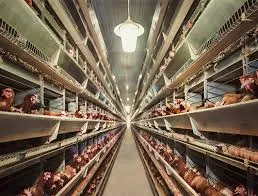homemade quail plucker
Oct . 14, 2024 07:50 Back to list
homemade quail plucker
Homemade Quail Plucker A Step-by-Step Guide
If you’re an avid quail hunter or simply enjoy raising quail for their delectable meat, processing these birds can be a rewarding experience. One of the most labor-intensive aspects of quail processing is plucking the feathers. Fortunately, with a little creativity and effort, you can build your own homemade quail plucker. This not only saves money but also provides a sense of accomplishment. In this article, we’ll guide you through the steps to create an efficient and effective quail plucker.
Why Build a Homemade Quail Plucker?
Building a homemade quail plucker has several advantages. First, it allows you to fine-tune the design according to your specific needs, such as space limitations and processing volume. Second, it can be more cost-effective than purchasing a commercial unit. Finally, creating your own plucker makes the entire quail processing experience more enjoyable as you can customize it to your liking.
Materials Needed
To build a homemade quail plucker, you will need the following materials
1. Drill - A power drill to create holes in the plucker base. 2. Plastic or Rubber Fingers - These are essential for plucking feathers efficiently. You can source these from old appliances or purchase them online. 3. Wood or PVC Pipe - This will serve as the base of your plucker. 4. Electric Motor - A small motor, such as a ¼ or ½ horsepower motor, will provide the necessary power. 5. Switch and Wiring - To control the motor and ensure safe operation. 6. Container - A bucket or tub to catch the plucked feathers and any waste.
Step-by-Step Instructions
1. Design the Base Start by determining the size of your plucker. A base of around 2 feet by 2 feet should suffice for small quail. Use wood or PVC pipes, and create a sturdy frame that can withstand the vibration of the motor.
homemade quail plucker

2. Attach the Motor Securely mount the electric motor on one side of the base. Ensure it’s fastened well to avoid any movement or wobbling during operation.
3. Install the Fingers Drill several holes into the base, spaced evenly apart. Insert the plastic or rubber fingers into these holes, ensuring they are tightly fitted. The fingers should stand upright and be approximately 3-4 inches high. The placement and density of the fingers will significantly affect the plucking efficiency.
4. Wiring the Motor Connect the switch and wiring to the motor. Make sure it is correctly wired to ensure safe operation. If you are not familiar with electrical work, consider consulting someone experienced to avoid hazards.
5. Set Up the Catchment Area Position a bucket or tub directly under the plucker to catch the feathers as they are removed from the quail. This makes cleanup easier and keeps your workspace tidy.
6. Test Your Plucker Before processing any quail, conduct a test run with a few feathers or an old bird. Check for any issues with the motor, finger arrangement, or overall function. Make necessary adjustments to improve efficiency.
How to Use Your Plucker
Once your quail plucker is ready, the process becomes straightforward. Simply dip the quail in hot water (around 140-160 degrees Fahrenheit) for about 30 seconds. This loosens the feathers and ensures faster plucking. Then, place the bird directly into the plucker and turn it on. Within seconds, the feathers should be removed, making the process quick and efficient.
Conclusion
Creating a homemade quail plucker can transform the often tedious task of feather removal into a swift and enjoyable part of quail processing. With a few basic materials and some DIY spirit, you can save time and enhance your quail processing experience. So gather your materials, follow these steps, and get ready to enjoy your freshly plucked quail!
-
Automatic Feeding Line System - Anping County Yize Metal Products Co., Ltd.|Pan Feeder Nipple Drinker,Broiler Farming
NewsJul.30,2025
-
Automatic Feeding Line System Pan Feeder Nipple Drinker-Anping County Yize Metal Products Co., Ltd.
NewsJul.30,2025
-
Automatic Feeding Line System-Anping County Yize Metal Products Co., Ltd.|Durable Construction&Easy Maintenance
NewsJul.30,2025
-
Automatic Feeding Line System-Anping County Yize Metal Products Co., Ltd.|Pan Feeder Nipple Drinker&Durable Poultry Farming Solution
NewsJul.30,2025
-
Automatic Feeding Line System Pan Feeder Nipple Drinker|Anping County Yize Metal Products Co., Ltd.
NewsJul.29,2025
-
Automatic Feeding Line System-Pan Feeder Nipple Drinker|Anping County Yize Metal Products Co., Ltd.
NewsJul.29,2025






